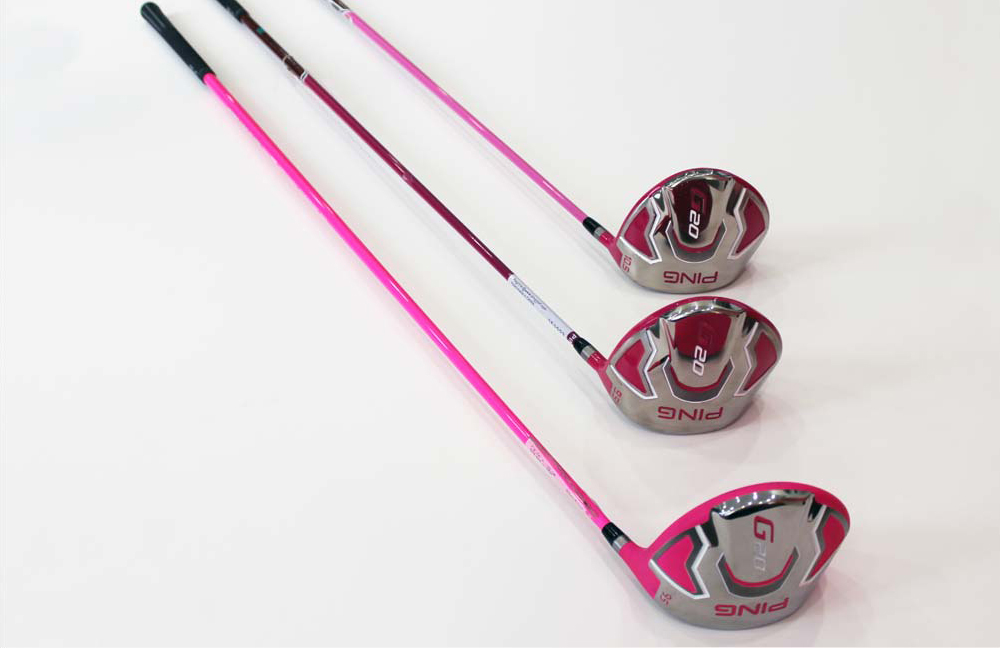It’s becoming more and more difficult to spot counterfeit products just by looking at them. Counterfeiters are constantly changing, and there isn’t one giveaway that indicates whether a product is fake. Scroll through to see if you can identify which of these products are counterfeits.
How to spot fake golf equipment
Counterfeit clubs can result in anything from a loss of distance and accuracy, to safety hazards – with shafts that shatter and heads that fly off mid-swing.
Some golfers look online and see what they think are top of the line clubs at bottom barrel prices so they buy them. But as the old adage goes, if it sounds too good to be true, it probably is.
The most reliable way to be sure someone is purchasing an authentic product is to buy from an authorized retailer. There will always be a risk that a product purchased from an unauthorized source will be counterfeit. The truth is: counterfeit manufacturers are constantly changing, and it’s becoming more difficult to spot fakes – until you play with them.
To ensure the golf equipment you’re buying, or have already bought, is authentic, ask yourself the following questions:
Spotting a Fake
It’s becoming more and more difficult to spot counterfeit products just by looking at them. Counterfeiters are constantly changing, and there isn’t one giveaway that indicates whether a product is fake. Scroll through to see if you can identify which of these products are counterfeits.
Scotty Cameron Putters
Scotty Cameron putters are frequently counterfeited. In this case, shoddy paint jobs and poor engraving are two indicators of these fake products. Both putters are counterfeits.
Callaway Drivers
You have to look closely at these Callaway drivers to see the very subtle differences between the two. Notice the different screws used to connect the shaft and the head? How about the slight difference in the center weight? In this picture, the real product is on the left, and the club on the right is counterfeit.
PING Drivers
When place side-by-side, the differences in these PING drivers are clear, but which one is real? The driver on the left is the only one of the three that features a matching shaft and club head. The colors on the other two are different, and those two are fake.
Irons
When cut in half, counterfeit clubs often reveal their true colors. The real irons, on the left, are partially hollowed out based on technical specifications and quality standards of professionally manufactured clubs. But how often do you get to cut your clubs in half to find out what’s inside?
Titleist Golf Balls
It’s not only clubs; counterfeiters will manufacture anything if they think they can make money from it. The real golf balls are on the right, and feature a uniform, multi-layer core. The balls on the left are unbalanced, and the material is far from professional grade.
Keep Golf Real
Ending counterfeiting isn’t a brand issue. It’s an honesty issue, it’s a quality issue, and in some cases, it’s a safety issue. For the good of customers and for the good of the game, the group is committed to putting an end to these fakes — because fake clubs are for fake golfers.
Q: Am I purchasing golf equipment from an authorized dealer?
A: A list of authorized retailers can be found on each manufacturer’s website, or by contacting the manufacturer’s customer service department.
Q: There are slight differences in the appearance of the club, including different shades of color or slightly different engravings. Did I purchase a fake?
A: Most likely. Most golf manufacturers don’t sell “blems” or “seconds,” so there won’t be different versions of golf equipment in the marketplace.
Q: Some websites offer discounted golf products and claim to be OEM’s or approved vendors. Are they legit?
A: Probably not. If the site is not identified as an authorized retailer or vendor according to the manufacturer’s website, it is likely selling counterfeit products. Websites that offer discounted products may be selling fakes. These sites are mainly based in China.
Q: The golf club that I purchased online was shipped from China. Should I be concerned?
A: Yes, if the product is shipped from China, the chances are high that it’s a fake.








